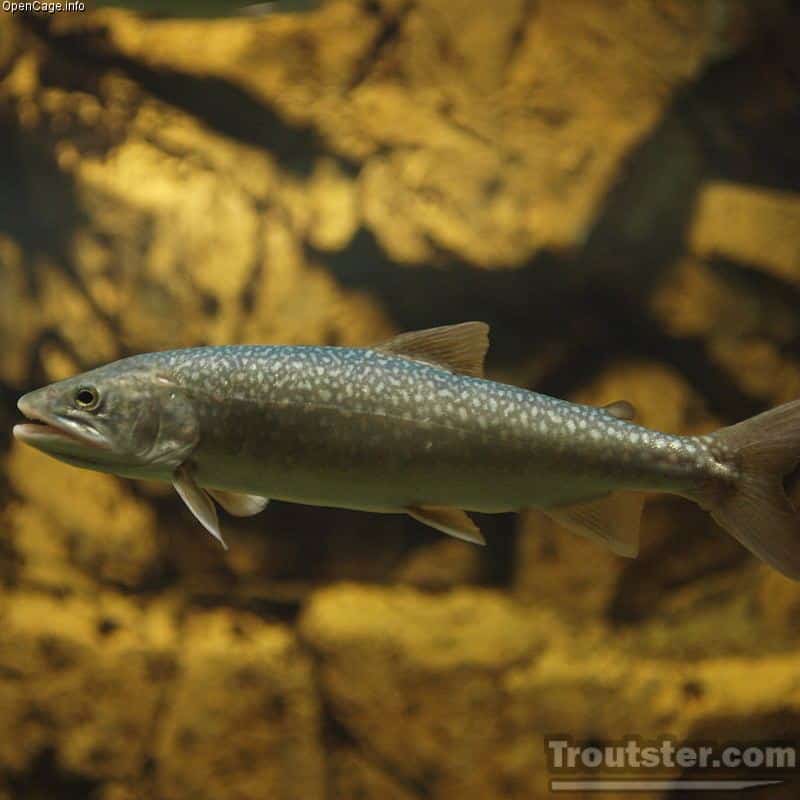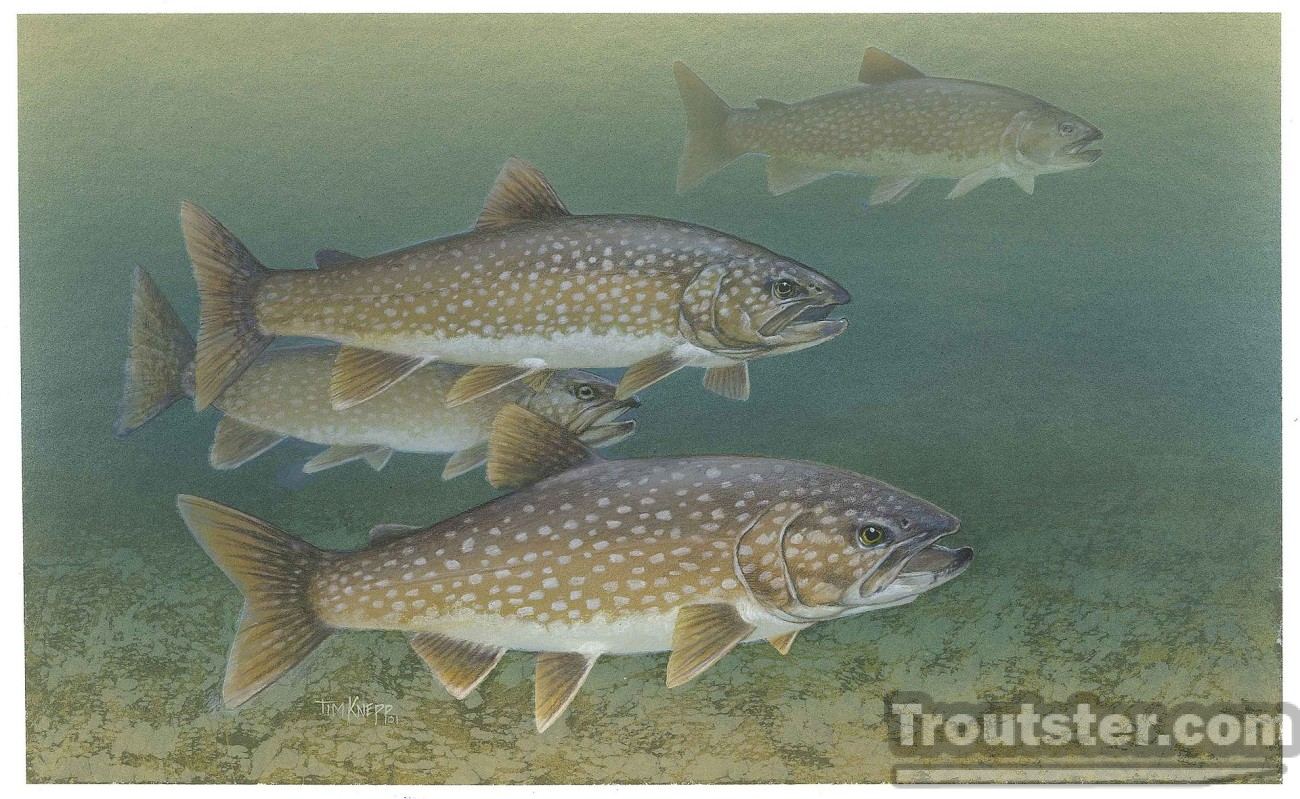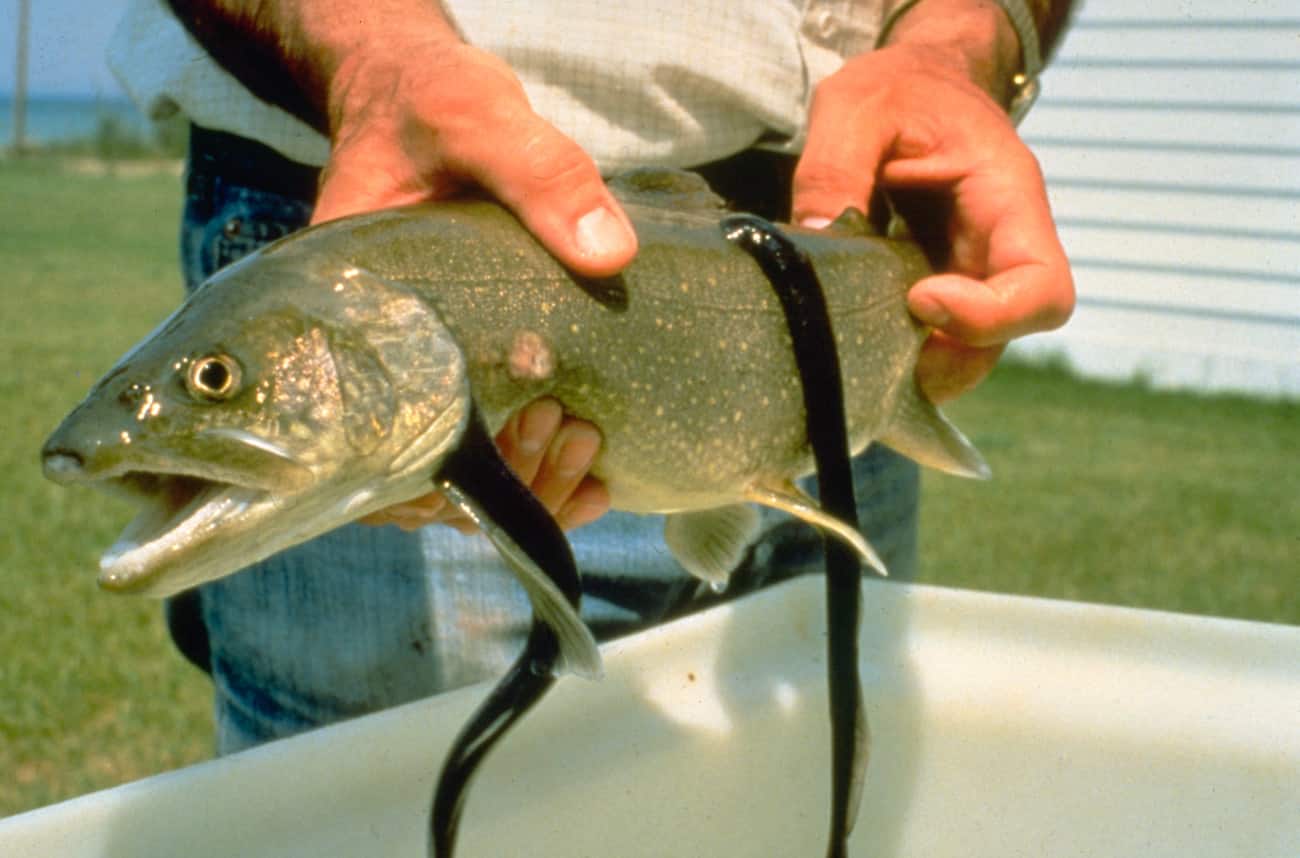This post was last updated on August 28th, 2021 at 02:19 pm
Lake Trout Facts and History
Lake trout are known by many names. They are still closely associated with the Great Lakes, and many people still refer to them as Great Lake Trout even though their numbers have dwindled there. They’re often referred to as lake char, or even salmon trout, because they’re a member of the Salvelinus genus in the salmon family. Others refer to them as mountain trout, tongue trout, or Mackinaw trout. The lake trout is a actually a very close relative of the colorful brook trout.

Part Of The Culture And Traditions Of The Great Lakes
Whatever name it goes by, the lake trout is an important part of the culture and traditions of the Great Lakes, one of the few parts of the world where the precise conditions the fish requires to thrive are present. Prized by anglers, it’s the largest type of trout native to the Great Lakes and other nearby bodies of water. It’s not a flashy looking fish, just light spots on a darker gray background, with a tawnier belly and a bit of white edging on the edge of its fins, but it’s a prodigious fighter when on the line and a favorite of anglers, especially ice fishermen.
A Rare Fish From A Global Perspective
If you look at lake trout from a global perspective, they’re a very rare species. There aren’t many bodies of water that can support their voracious appetites and their need for oxygen-rich, cold, fresh water. Lake trout can be found in a few very large river systems, but for the most part they are deep-water lake dwellers. They’re found as far north as northern Canada and Alaska, and as far east as Maine, but their main home is the Great Lakes Region.
While lake trout are slow growing fish, they also grow to be the largest of the chars. The record lake trout ever caught weighed an astonishing 102 pounds, with a length of 50 inches. Specimens grow longer than that; the longest caught on a rod and reel was “only” 72 pounds, but it was 59 inches long. It’s quite common for anglers to catch lake trout between 15 and 40 pounds.
Slow Growth For A Deep Water Fish
The lake trout’s slow maturation along with its popularity as a game fish make it extremely susceptible to overfishing. Hatcheries release many fry into lakes to allow game fisherman to have a ready supply of available prey, but most are caught before they’re old enough to spawn, which damages their overall stocks. In the southern reaches of the lake trout’s range, they can be found in fairly shallow water of 10 to 15 feet deep for a short period during the spring and fall, but they prefer frigid water temperatures and head for the bottoms of lakes between 100 and 200 feet deep.
The lake trout ranges far and wide in this cold, twilight world in search of food. It’s a voracious eater and relentless hunter, and subsists on a diet made up almost entirely of other fish. It eats ciscoes, alewives, smelt, and sculpin, plus many other kinds of fish it encounters, will sometimes take insects and crustaceans, and has even been known to eat the occasional small mammal.

Lake Trout Can Threaten Other Fish Populations
This penchant for the lake trout to eat other fish has posed a problem when they’ve been introduced to bodies of water that they’re not native to. Either by accident or design, someone introduced lake trout to Yellowstone Lake and its surrounding tributaries sometime in the 1970s or 1980s. During the 1990s, the first fully-grown lake trout was caught in Yellowstone Lake, and since then the stocks of the important native Yellowstone cutthroat trout have been decimated.
Lake trout can each eat as many as 41 cutthroat trout per year. This has forced the Park Service and other interested organizations to trap and kill as many as 300,000 lake trout in Yellowstone Lake each year to try to restore the lake to its natural balance. The animals in Yellowstone rely on cutthroat trout for food and they never see the lake trout that typically patrol only the deepest reaches of the lake and rivers.
Lake trout, like other chars, return to shallow beds to spawn each year. The young lake trout don’t become sexually mature until 6 or 7 years of age, when they are about 9 or 10 pounds on average. Lake trout can live for over 25 years, and they get bigger every year.
Pollution, Overfishing, and the Lamprey Lead to a Population Decline
Lake trout are fun to catch and good to eat, which have made them a favorite for sportsmen for generations. Beginning in the 1930s, their numbers were decimated by a combination of overfishing, pollution, and the introduction of a terrifying new predator: The Lamprey Eel.

The lamprey eel is not native to the Great Lakes, but it found its way in when canals allowed access from the outside, and once established they found no natural enemies, but plenty of prey. They’re ferocious looking creatures, a prehistoric-looking jawless fish with a toothed sucker for a mouth. These parasitic creatures grab onto the flanks of fish like lake trout and feed on their victims by sucking blood out of them until they die. Some forms of lampreys actually bore into the body of their victims. Once these invasive pests made it into the great lakes, it was only a matter of time before they destroyed the population of lake trout they found there. Already under pressure from overfishing and the pollution from the heavy industry that rings the Great Lakes, the lake trout were no match for this scourge.
Progress Is Being Made In Returning Lake Trout Numbers To Normal
After 1965, concerted efforts of both Canadian and American governments, nature conservancy groups, and environmental advocacy groups have made enormous strides in ridding the habitat of the lake trout of pollution. They’ve regulated fishing to allow stocks to recover, and begun a concerted effort to control the population of lamprey eels that plagued the lake trout population. These measures have greatly restored the numbers and health of lake trout, and make both commercial and sport fishing for the great inland char a centerpiece of the tradition of the Great Lakes once more.
Lake Trout FAQ
Do Lake Trout have scales?
Lake trout only have small scales, so they don’t always need to be scaled before cooking. You might find it necessary to scrape the fish’s skin with a descaler or the dull side of a knife if you catch a larger trout, probably over 14 inches or so.
